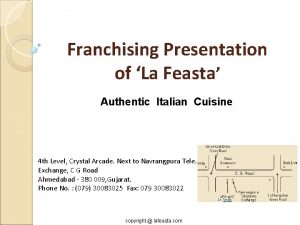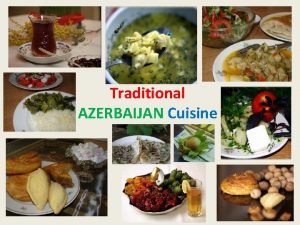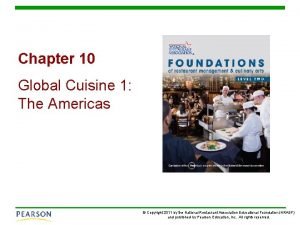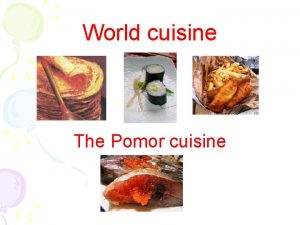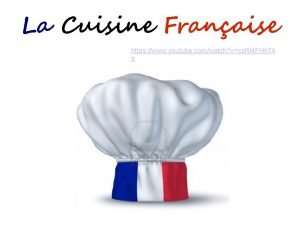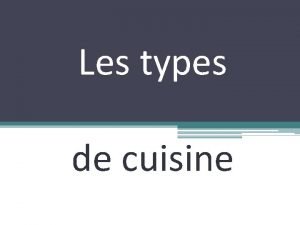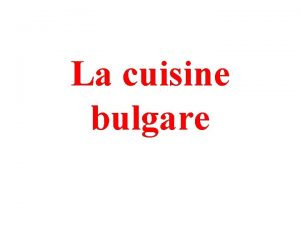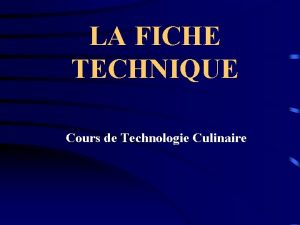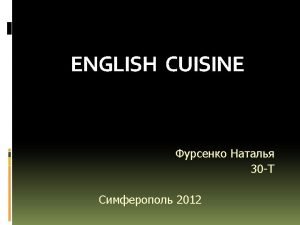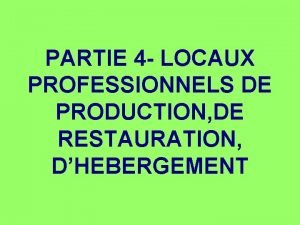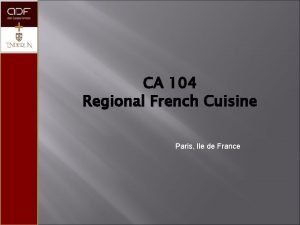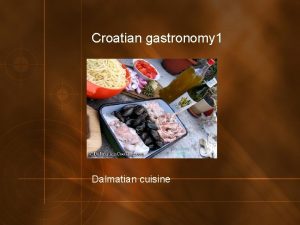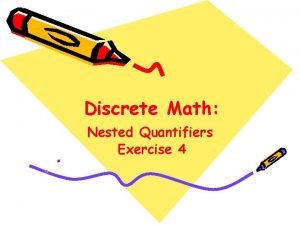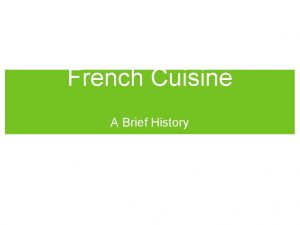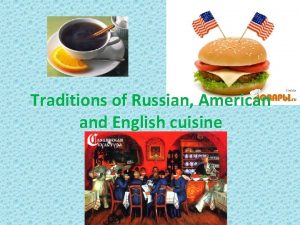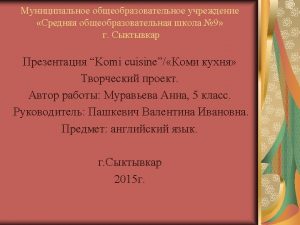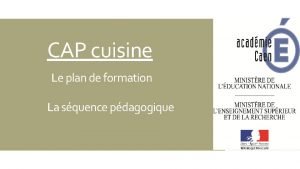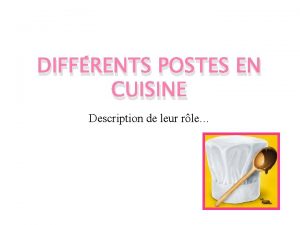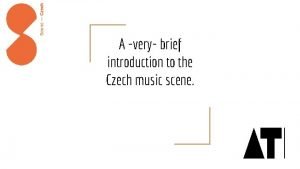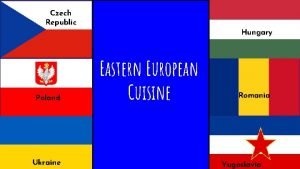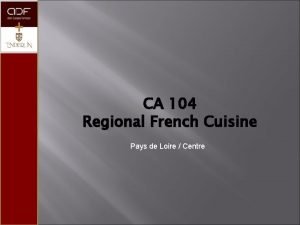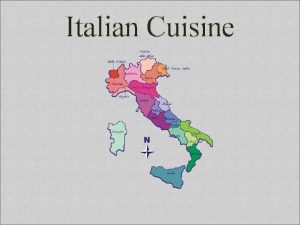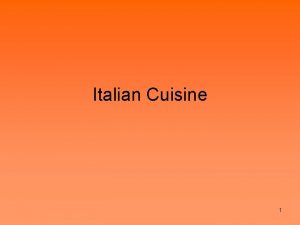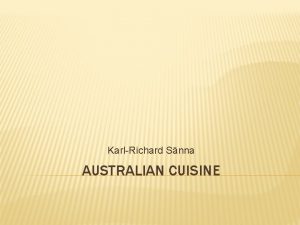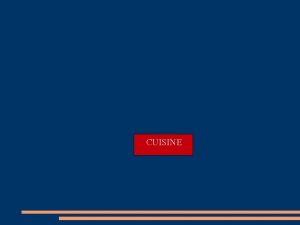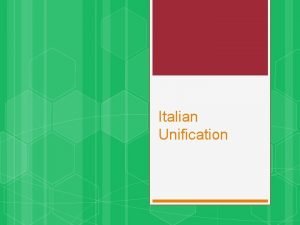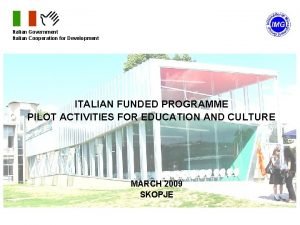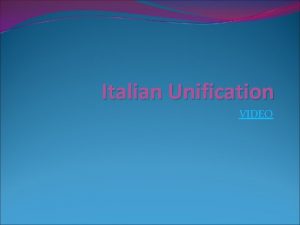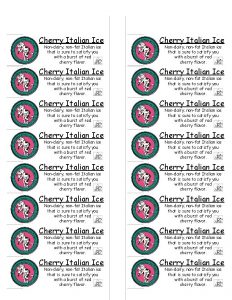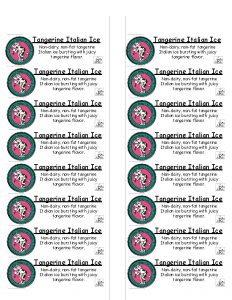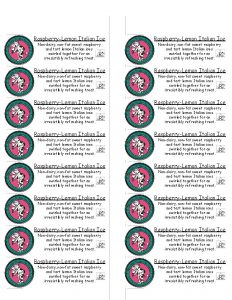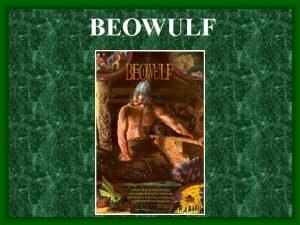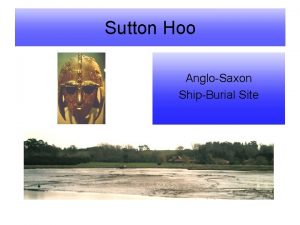The reinvention of Italian cuisine in the AngloSaxon





















![[…] little deal tables, with the ordinary preparations for a street breakfast, make their […] little deal tables, with the ordinary preparations for a street breakfast, make their](https://slidetodoc.com/presentation_image_h/ed2e0644418836ced027635e935162ce/image-22.jpg)
![In the suburbs, the muffin boy rings his way down the little street, […] In the suburbs, the muffin boy rings his way down the little street, […]](https://slidetodoc.com/presentation_image_h/ed2e0644418836ced027635e935162ce/image-23.jpg)






























- Slides: 53

The reinvention of Italian cuisine in the Anglo-Saxon imagination Esterino Adami Department of Humanities University of Turin esterino. adami@unito. it

Outline of this talk O Idea of food discourse and cultural/social construction of food schema O Food in domains and texts (literature, language) O Food and identity O Italian lexical borrowings in English (food and drinks) O Food in the Victorian age O Italian food in utopian romance O Reinvention of Italian food: recipes

Introduction O 2015 Milan-based World Expo, with the motto “Feeding the planet, energy for life” O Lévi-Strauss’ paradigm of ‘the raw and the cooked’ (1964): "certain categorical opposites drawn from everyday experience with the most basic sorts of things — e. g. 'raw' and 'cooked, ' 'fresh' and 'rotten, ' 'moist' and 'parched, ' and others — can serve a people as conceptual tools for the formation of abstract notions and for combining these into propositions. " O Food discourse for indexicality of identity

Italian food discourse O Popularity of Italian food: http: //www. fedrest. com/italian. html O The University of Gastronomic Sciences, Pollenzo (Italy) http: //www. unisg. it/en/ O Idea of Slow food http: //www. slowfood. com/ O Cheese www. cheese. slowfood. com O Language (of food) as a social practice (Alistair Pennycook) O Methodology: cultural studies, literary studies, stylistics, comparative literature, critical discourse analysis

Food discourse and identity O idea of ‘Discourses’ (with capital letter) (Gee 1996) O ‘major/minor’ identity categorization (Lakoff 2006) O Food discourse

Key words in food discourse O “real food”, “home-made”, “traditional” or “natural” O Authenticity, circulation and identity O Transformation, reinvention and hybridity of food O “Greek, Italian, Indian and Chinese food have been part of the English diet for decades” (Fox 2004: 300 -301) O Transformation of food habits through time

Italianisms: O Italian lexical borrowings in English from the domain of food/drink O Oxford English Dictionary: 704 lemmas of the semantic field of food and 29 lemmas of the semantic field of drinks O art (110) and music and song (334)

O Food: Antipasto, broccoli, cannelloni, cassata, fettucine, fico, gnocchi, grissino, lasagne, linguine, manzo, minestra, minestrone, mortadella, mozzarella, panettone, pasta, pecorino, pesto, pistacchio, pizza, polenta, provolone, ravioli, ricotta, risotto, semola, spaghetti, stracchino, tagliatelle, tortellini, vermicelli, zucca, zucchini… O Drinks: Cappuccino, espresso, granita, grappa, malvasia, maraschino, Martini, moscato, Nebbiolo, rosolio, sambuca, vino, vinsanto…

Italian names of restaurants, eateries, cafes / dishes O In New York: like Dolce Vita (from the world of cinema), or like La Gioconda or Dante (from Italian art) O Restaurant’s names with a musical reference (Intermezzo) or a tourist indication (Firenze, Roma, San Pietro), or with terms typically considered as Italianisms like Babbo, Bella Mamma, Ciao, Al Dente Ristorante, or in other case connected with soccer (Azuri Cafè). O Dishes with Italian-sounding names (sound symbolism) like Farfalle al limoncello, Chicken scarpariello, Salsiccia San Gennaro. O Process of accommodation for the Spelling of these names, e. g. Dolche Vita cafè at the University of Kent (UK)

The Victorian age: C. Dickens O Hunger, food and abundance of food The master, in his cook’s uniform, stationed himself at the copper; his pauper assistants ranged themselves behind him; the gruel was served out; and a long grace was said over the short commons. The gruel disappeared; the boys whispered each other, and winked at Oliver; while his next neighbours nudged him. Child as he was, he was desperate with hunger, and reckless with misery. He rose from the table; and advancing to the master, basin and spoon in hand, said: somewhat alarmed at his own temerity: “Please, sir, I want some more”. Oliver Twist p 56 (1837 -9)

Gruel vs Polenta O Gruel is a simple dish made by boiling oats in milk or water, eaten especially in the past by poor people O Polenta: mush made of chestnut meal, cornmeal, semolina or farina. Origin: Italian from Latin, crushed and hulled barley, akin to Latin pollen fine flour; first use 1764 (Merriam Webster online) O Flour of wheat, or milletor broad beans, or hulled wheat, or lupine, and in some regions even of rice or chestnuts

Polenta in Italian literature O I promessi sposi (1827) by Alessandro Manzoni (The Betrothed) O the spread of pellagra

Food galore O The Pickwick Papers (1836): 35 breakfasts, 10 lunches, 32 dinners and even 249 beverages O Cf. Pantagruel (Rabelais) O Pantagruelian / Gargantuan

Micro-details related to food My sister had a trenchant way of cutting our bread-andbutter for us that never varied. First, with her left hand she jammed the loaf hard and fast against her rib […] Then she took some butter (not too much on a knife and spread it on the loaf, in an apothecary kind of way, as if she were making a plaster – using both sides of the knife with a slapping dexterity, and trimming and moulding the butter off round the crust. Then, she gave the knife a final smart wipe on the edge of the plaster, and then sawed a very thick round off the loaf: which she finally, before separating from the loaf, hewed into two halves, of which Joe got one, and I the other. Great Expectations, p. 42 (1860 -61)

Food during the Christmas time It was his own room. There was no doubt about that. But it had undergone a surprising transformation. The walls and ceiling were so hung with living green, that it looked a perfect grove; from every part of which, bight gleaming berries glistened. The crisp leaves of holly, mistletoe, and ivy reflected back the light, as if so many little mirrors had been scattered there; and such a mightily blaze went roaring up the chimney, as that dull petrifaction of a hearth had never known in Scrooge’s time, or Marley’s, or for many and many a winter season gone. Heaped up on the floor, to form a kind of throne, were turkeys, geese, game, poultry, brawn, great joints of meat, sucking-pigs, long wreaths of sausages, mince-pies, plum-puddings, barrels of oysters, red-hot, chestnuts, cherry-cheeked apples, juicy oranges, luscious pears, immense twelfth cakes, and seething bowls of punch, that made the chamber dim with their delicious steam. A Christmas Carol, p 45

Mrs Cratchit made the gravy (ready beforehand in a little saucepan) hissing hot; Master Peter mashed the potatoes with incredible vigour; Miss Belinda sweetened up the apple sauce; Martha dusted the hot plates; Bob took Tiny Tim beside him in a tiny corner at the table; the two young Cratchits set chairs for everybody, not forgetting themselves, and mounting guard around their posts, crammed spoons into their mouths, lest they should shriek for goose before their turn came to be helped. At last the dishes were set on, and grace was said. It was succeeded by a breathless pause, as Mrs Critchit, looking slowly all along that carving knife, prepared to plunge it in the breast; but when she did, and when the long expected gush of stuffing issued forth, one murmur of delight arouse all around the board, and even Tiny Tim, excited by the two young Cratchits, beat on the table with the handle of his knife, and feebly cried Hurrah! A Christmas Carol, p. 53 -4

Italian cakes and desserts of the Christmas period O panettone: a dome-shaped Christmas cake from Milan, filled with raisins and candied peel, pandoro: a buttery vanilla-flavoured Christmas cake from Verona, star-shaped and sprinkled with powdered sugar. O In the area around Brescia, for example, Saint Lucy brought gifts to the children and they prepared ‘Saint Lucy’s dish’, which consisted of biscuits and milk. O pan giallo (traditional Christmas cake from Rome made with corn meal, raisins, almonds and nuts – in Lazio coloured with saffron), pan pepato (traditional cake from central Italy, made with flour, toasted almonds, plain cocoa, sugar, honey, mixed candied peel, cinnamon powder, cloves, pepper and plain chocolate), pan speziale (Carthusian bread, Christmas bread with nuts and chocolate from Bologna; originally prepared by carthusians (Cf. gingerbread), or panforte (traditional heavy spiced cake from Siena filled with candied peel and walnuts).


Christmas pudding O a 14 th century porridge called 'frumenty‘, made of beef and O O O mutton with raisins, currants, prunes, wines and spices customary Christmas dessert around 1650, banned as a bad custom in 1664 by the Puritans In 1714, King George I re-established it as part of the Christmas meal, Superstitions surrounding Christmas Puddings: the pudding should be made with 13 ingredients to represent Jesus and His Disciples The decorative sprig of holly on the top of the pudding is a reminder of Jesus' Crown of Thorns that he wore when he was killed. In the Middle Ages, holly was also thought to bring good luck and to have healing powers. It was often planted near houses in the belief that it protected the inhabitants.


Food in Dickens’ non fiction O Street food O Restaurant experience
![little deal tables with the ordinary preparations for a street breakfast make their […] little deal tables, with the ordinary preparations for a street breakfast, make their](https://slidetodoc.com/presentation_image_h/ed2e0644418836ced027635e935162ce/image-22.jpg)
[…] little deal tables, with the ordinary preparations for a street breakfast, make their appearance at the customary stations. Numbers of men and women (principally the latter), carrying upon their heads heavy baskets of fruit, toil down the park side of Piccadilly, on their way to Covent Garden, […]. Here and there, a bricklayer’s labourer with the day’s dinner tied up in a handkerchief, walks briskly to his work, […] basket-women talking, piemen expatiating on the excellence of their pastry. Skeches by Boz, 48 -9
![In the suburbs the muffin boy rings his way down the little street In the suburbs, the muffin boy rings his way down the little street, […]](https://slidetodoc.com/presentation_image_h/ed2e0644418836ced027635e935162ce/image-23.jpg)
In the suburbs, the muffin boy rings his way down the little street, […] for Mrs Macklin, of n. 4, has no sooner opened her little street-door, and screamed out ‘Muffins!’ with all her might, than Mrs Walker, at n. 5, puts her head out of the parlour, and screams ‘Muffins!’ too; and Mrs Walker has scarcely got the words out of her lips, than Mrs Peplow, over the way, lets loose Master Peplow, who darts down the street, with a velocity which nothing buttoned muffins in perspective could possibly inspire, and drags the boy back by main force, whereupon Mrs Macklin and Mrs Walker, just to save the boy trouble, and to say a few neighbourly words to Mrs Peplow at the same time, run over the way and buy their muffins at Mrs Peplow’s door. Skeches by Boz, 53

Cf. textual and chromatic effects O Canestra di frutta by Caravaggio (1599) O Guttuso’s Vucciría (1974)

On the streets of London O “flat-fish, oyster and fruit vendors” as well as other peddlers “a cheesemonger offering huge piles of bright red and pale yellow cheeses, mingled with little fivepenny dabs of dingy bacon, various tubs of weekly Dorset, and cloudy rolls of best fresh” and also “the baked-potato man” (p. 55). O “houses of refreshment”, in which “chops, kidneys, oysters, stout, cigars, and ‘goes’ innumerable, are served up amidst a noise and a confusion of smoking, running, knife-clattering and waiter chattering, perfectly indescribable” (p. 56). O food discourse as a wealth of lexical items, a list of linguistic variations, but for the Italian writer Italo Calvino it is also a ‘mental, aesthetic and symbolic’ temptation or gluttony (evocative power of names)

Restaurants I travel by railroad. I start from home at seven or eight in the morning, after breakfasting hurriedly […] I am hungry when I arrive at the ‘Refreshment’ station where I am expected. Please to observe, expected. I have said, I am hungry; perhaps I might say, with greater point and force, that I am to some extent exhausted, and that I need – in the expressive French sense of the word – to be restored. What is provided for my restoration? I turn my disconsolate eyes on the refreshments that are to restore me. I find that I must either scald my throat by insanely ladling into it, against time and for no wager, brown hot water stiffed with flour; or I must make myself and sick and Banbury cake; or I must stuff into my delicate organisation, a currant pincushion which I know will swell into immeasurable dimensions when it has got there; or I must extort from an iron-bound quarry, with a fork, as if I were farming an inhospitable soil, some glutinous lumps of gristle and grease, called pork-pie. While thus forlornly occupied, I find that the depressing banquet on the table is, in every phase of its profoundly unsatisfactory character, so like the banquet at the meanest and shabbiest of evening parties. Refreshments for travellers, p 76 -7

Banquet O Plato’s Symposium to Xenophon’s Symposium, but also Erasmus’ Colloquia. O banquet displays positive connotations, O examples of anti-banquets, such as the banquet at the heart of Macbeth (III, 4) when the ghost of Banquo appears, or in other texts like Don Juan, Flaubert or Seneca’s Typesets


Garibaldi biscuits O Garibaldi biscuits: currants squashed and baked between two thin, oblongs of biscuit dough—a sort of currant sandwich O named after Giuseppe Garibaldi, an Italian general and leader of the struggle to unify Italy during the Risorgimento, who made a popular visit to Tynemouth and South Shields in England in 1854

Italian food in utopian fiction O News from Nowhere (William Morris, 1890) Robert patted her head in a friendly manner; and we fell to on our breakfast, which was simple enough, but most delicately cooked, and set on the table with much daintiness. The bread was particularly good, and was of several different kinds, from the big, rather close, darkcoloured, sweet tasting farmhouse loaf, which was most to my liking, to the thin pipe-stems of wheaten crust, such as I have eaten in Turin. News from Nowhere, 54

Bread and breadsticks O a value of sacredness O celebration of many rites (e. g. the holy communion, O the adjective good or the noun goodness - Italian phrase ‘buono come il pane’ O Christian tradition, bread as the body of Christ. O the ‘holy’ bread/body of Christ O Gospel: Christ as “the bread of life” (John 6: 35) O expression pane della scienza to indicate the idea of sharing ‘food’ among those who want to know and discover. O Dante’s Convivio: a meeting of table mates (convivial) who share the angels’ bread (knowledge/erudition). (same image in the works by Saint Augustine)

Bread and mankind O Bread-making and resides in the image of popular home O O knowledge, in the idea of knowing how to do or create things (an artisan / the patience that you need to construct something, and even in the act of making it) employs the metaphor of bread-making in Shakespeare’s Troilus and Cressida as a device to point the patience of the lover and not of the loved one. Bread does not exist in nature, but it is made by the man, it is the product of a complex process (cf. history of humankind, from the very beginning to the contemporary age) In the Greek mythology, bread constitutes a food for men only since the gods do not eat it. Polyphemus, the Cyclops that does not look like men, feeds on cheese only, according to the Odyssey (IX, 187).


Italian phraseology related to bread O Andare come il pane O Avere il pane ma non i O Sell like hot cakes Have O Dire pane al pane (e O Call a spade denti vino al vino) O Non avere pane O Non è pane per i tuoi denti O Essere pane e vino the means but not the knowhow O Be poor O Be more than one can handle / be beyond one’s means O Be hand in glove

O other locutions “se non è zuppa è pan bagnato / mangiare pane a tradimento / misurare il pane / portare via il pane di bocca da qualcuno / non si vive di solo pane”, O Cf. Biblical quotation transformed into a proverb, from Matthew 4. 4. and Luke 4. 4. (‘Man does not live on bread alone’)

Turin breadsticks O Breadsticks (grissini) in the city of Chieri, on the outskirts of Turin O the story of the breadstick is tied to Antonio Brunero, a baker who first made this type of bread in 1679, for the new 9 year old King Vittorio Amedeo II, (the typical long and thin loaves of bread of that period were turned and stretched into pipes or sticks) O Rubatà: in Piedmontese (Italian regional dialect) ‘fallen/rolled’


Italian food in the world

Food discourse through in the recipe types: O Structural patterns of recipes: title (a nominal group or a noun phrase), enticement (a full sentence with a ‘be’ clause followed by positive attitudinal words like “traditional, succulent or tempting”), ingredients (a sequence of nominal groups whose head is premodified by measuring words, sometimes with abbreviations: “ 90 g (3 ½ oz) fresh white breadcrumbs”), method (clauses in the imperative mood, meanings of location, time and manner, with action-oriented verbs) and serving quantity (Eggins 2005: 68) O “recipe-writing is an art form that has changed over time, and as with menus, the changes are related to the writer’s assumptions about the relationship shared with the reader” (Lakoff 2005: 157) O food and meals “serve as a vehicle of bonding, affiliation, belonging, acceptance, and therefore esteem, as well as a means of self-actualization” (Perianova 2006: 23)

Italian food discourse as a genre Two textual realisations of the recipe genre: O Recipes contained in advertising material freely available in British supermarket Safeway (1990 s) O Recipes from a cookery book by celebrity chef Jamie Oliver (2005)


Stylistic features O Italian style and flair” O ‘Italian feast menu’: fettucine with creamy spring vegetable sauce, oven-baked turkey with pesto crust, amaretti Sicilian cheesecake O We’ve gone all Italian (graphological chromatic attention-getting device) O Evaluative expressions: “a real family occasion”, “a wonderful Italian feast”, “real O Hyperbolic constructions (“all you need”)


James (‘Jamie’) Oliver O Celebrity chef and restaurateur, MBE in 2003, author O O of TV cooking shows and publications The Italian connection (Antonio Carluccio’s restaurant in Covent Garden) Promotion of local products and food education Jamies’ Italy (2005): a hybrid volume featuring recipes + professional photographs + commentaries (“My thoughts on” + name of a dish) + some autobiographical sketches “Since I was a teenager I’ve been totally besotted by the love, passion and verve for food, family and life itself that about all Italian people have, no matter where they’re from or how rich or poor they might be” (Oliver 2005: viii)

Jamie’s Italy (2005) O 132 recipes, divided into these categories: antipasti/starters, street food and pizza, first courses (soups, pasta, risotto), insalate/salads, secondi/main courses (fish, meat), contorni/side dishes, dolci/desserts O Gricean maxims – quantities, times and methods O Identity of author (and reader)

Language O Informal register + specialised lexicon of gastronomy O Colloquial tone: “some real ballsy flavour” (p. 129, for the risotto recipe), “absolutely moreish” (p. 266, for the aubergine parmigiana) O Vocatives: “Ok, tigers” O Onomatopoeic indication “a good splash of olive oil” (p. 106)

Borrowings from Italian O Ingredients (“cavolo nero”, p. 70), names of dishes (antipasti, p. 260; chicken cacciatora, p. 222), cooking methods (“al dente”, p. 90) O Italian loanwords referring to people: “the poor old mammas have got used to bulking out soups easily by adding pasta, bread and beans” (p. 63) O Appellative ‘mamma’ or ‘nonna’ as terms of kinship providing stereotypical images of Italy

Person deictic forms O Onomastic terms as personal deictic forms: “Nonna Fangitta’s tuna” (p. 204), “Nada’s cake” (p. 294), “Nonna Giusy’s fish with cous” (p. 207), or “Pasta Norma style” (p. 204) O “I haven’t got a clue who Norma is, but I’m sure she’s a good old girl!” (Oliver 2005: 88)

Use of personal pronouns O Tripartite use of pronouns: I / we / they O “we/us” (the British) versus O O “they/them” (the Italians) thanks to a mediating agent (“I”, Jamie Oliver) “[flavours] very accessible to us back in Britain” (p. 116) [in Jamie’s personal recipe for white risotto] “and if a local Italian turns his nose up, well, I don’t care, because in this chapter I consider myself a know-it -all” (p. 129) title of the book as an indicator of identity appropriation and abrogation (construction of persona) use of personal references driven by the power of implying and assuming (Jeffries 2010)

Other semiotic resources O Professional photographs by David Loftus and Chris Lerry O Images of stereotyped Italianness (rural landscapes, religious references, but also bloody images of wild game becoming high to add dramatic intensity)

Italian food discourse today Ten days after the shooting I drove to Watlington to keep my appointment with joseph Lacy. The following day I spent the morning in my study making arrangements on the phone, and in the afternoon I walked to our local Italian food shop to collect ingredients for our picnic. It was much the same as before – a mozzarella globe, ciabatta, olives, tomatoes, anchovies, and for the children, a no-frills pizza margherita. The next morning I packed the food into a rucksack along with two bottles of Chianti, mineral water and a six-pack of Cokes. Ian Mc. Ewan, Enduring Love, 1997, p. 220

Conclusions: O “a cuisine is a richly structured cultural object, with its component flavor elements and its set of combinatory grammatical principles, learned early and deeply” (Jurafsky 2014: 184) O Identity / authenticity / circulation O Food discourse in-between neophobia and neophilia (Perianova 2010) O “human identity as a continual work in progress, constructed and altered by the totality of life experience” (Lakoff 2005: 142)

Thank you for your attention
 Italian cuisine presentation
Italian cuisine presentation Anglo saxon runes
Anglo saxon runes Anglosaxon history
Anglosaxon history How old is english language
How old is english language Azerbaijan cuisine
Azerbaijan cuisine Chapter 10 global cuisine 1 the americas
Chapter 10 global cuisine 1 the americas Cuisine rhyme
Cuisine rhyme China cuisine
China cuisine Brigade system
Brigade system Although
Although Youtube cuisine française
Youtube cuisine française Types de cuisine
Types de cuisine Moussaka bulgare
Moussaka bulgare English cuisine
English cuisine Fiche technique culinaire
Fiche technique culinaire English cuisine encompasses
English cuisine encompasses Circuit propre sale cuisine
Circuit propre sale cuisine Potage st germain soup origin
Potage st germain soup origin Dalmatian cuisine
Dalmatian cuisine Let t(x y) mean that students like cuisine y
Let t(x y) mean that students like cuisine y Pays de la cuisine lune
Pays de la cuisine lune Where did french cuisine originated
Where did french cuisine originated American cuisine
American cuisine Anna komi
Anna komi Brigade de cuisine
Brigade de cuisine Referentiel cap cuisine
Referentiel cap cuisine Progression cap cuisine
Progression cap cuisine Postes en cuisine
Postes en cuisine Czech cuisine of perversions
Czech cuisine of perversions Carnet personnel de techniques professionnelles cap cuisine
Carnet personnel de techniques professionnelles cap cuisine Pppst clipart
Pppst clipart Typical english cuisine
Typical english cuisine Eastern european cuisine history
Eastern european cuisine history Ppt on odisha food
Ppt on odisha food Chinese cuisine logo
Chinese cuisine logo Loire valley cuisine
Loire valley cuisine Cái miệng nó xinh thế
Cái miệng nó xinh thế Mật thư tọa độ 5x5
Mật thư tọa độ 5x5 Bổ thể
Bổ thể Tư thế ngồi viết
Tư thế ngồi viết Thẻ vin
Thẻ vin Giọng cùng tên là
Giọng cùng tên là Thể thơ truyền thống
Thể thơ truyền thống Bài hát chúa yêu trần thế alleluia
Bài hát chúa yêu trần thế alleluia Các châu lục và đại dương trên thế giới
Các châu lục và đại dương trên thế giới Từ ngữ thể hiện lòng nhân hậu
Từ ngữ thể hiện lòng nhân hậu Hươu thường đẻ mỗi lứa mấy con
Hươu thường đẻ mỗi lứa mấy con Diễn thế sinh thái là
Diễn thế sinh thái là Vẽ hình chiếu vuông góc của vật thể sau
Vẽ hình chiếu vuông góc của vật thể sau Làm thế nào để 102-1=99
Làm thế nào để 102-1=99 Tỉ lệ cơ thể trẻ em
Tỉ lệ cơ thể trẻ em Lời thề hippocrates
Lời thề hippocrates đại từ thay thế
đại từ thay thế Quá trình desamine hóa có thể tạo ra
Quá trình desamine hóa có thể tạo ra
